Sadistic Urbanism
The New York Times just ran a story about the steps that Honolulu is taking to crack down on the homeless in an effort to shore up its tourism industry. Homelessness is up 32% in Honolulu over the past 5 years. This has produced aggressive panhandling and frightened tourists. The city’s response includes seizing the property of homeless persons, fining them for public urination, prohibiting lying or sitting on sidewalks, closing public parks at night, and banning tents and lean-tos in public spaces. There’s some set-aside money for building low-cost housing, but that’s a longer-term goal. Honolulu’s mayor Kirk Caldwell describes this set of strategies as “compassionate disruption.”
This story appears at a time when other kinds of strategies for disrupting the lives of the homeless—strategies of a more direct, material nature—are back in the news. These include the tactic of placing spikes or studs in doorways and ledges to prevent sitting or sleeping by homeless persons, and furnishing public spaces with uncomfortable benches that have the same disruptive and displacing effects.
The spikes in the London case (above) were removed after great public outcry, including criticism from London’s mayor, Boris Johnson. But they remain widely used in other cities. Also widely used is the “bum proof bench”, whose variants are most recently catalogued by Georgia Tech’s Robert Rosenberger. The Guardian‘s Ben Quinn describes these tactics as “hostile architecture.” He reminds us that sound can also have a hostile effect, such as the use of classical music, birdsong, and mosquito devices to discourage loitering by teenagers and other undesirables. Aurelian Bouayad refers to such tactics as “disciplinary architecture.” Bouayad’s piece does an especially nice job of directing readers to the seminal literature that demonstrates the power of urban materiality to shape, constrain, and regulate human behavior. This includes Langdon Winner’s famous 1980 article in Daedulus called “Do Artifacts Have Politics?,” and Mike Davis’ terrific 1990 book City of Quartz that’s indispensable for understanding sadistic street environments in Los Angeles and elsewhere.
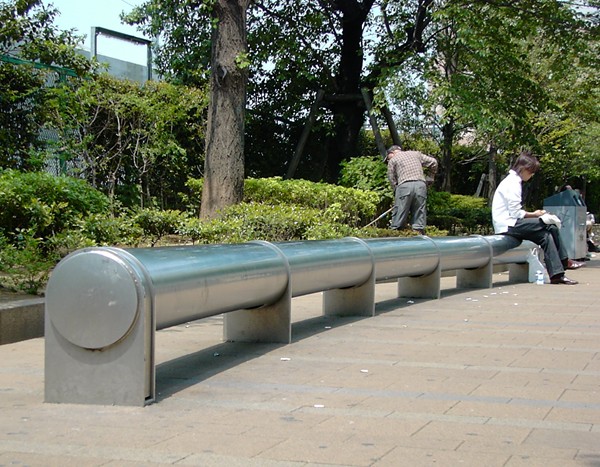
Tubular, Stainless Steel Bench in Ikebukuro West Park, Tokyo: Hot in Summer, Cold in Winter (Yumiko Hayakawa)
“Hostile” and “Disciplinary” architecture are apt terms for describing much of the contemporary built environment of cities. Other observers use terms like “Defensive”, “Aggressive”, and “Fortress” architecture. However they’re described, these material interventions are perhaps most usefully classified—following Mike Davis—under a broader category of Sadistic Urbanism that would also include the socio-legal interventions that Honolulu’s Mayor Caldwell proposes as solution to the problem of homelessness. The alternative to Sadistic Urbanism is not the “compassionate” disruption championed by Mayor Caldwell but rather a humane urbanism that provides safe and affordable housing plus the other amenities that we citizens ought to reasonably expect in any city that’s planned and designed for use by multiple publics: comfortable street-side seating, widely accessible parks and other common spaces, safe and reliable mass transit, value shopping and healthy eating alternatives, and a critical mass of free public restrooms.
There are some clever, tongue-in-cheek proposals for how today’s increasingly sadistic street environment might be reclaimed by citizens via architectural counter-interventions. These include inflatable benches that convert to homeless shelters and suits that allow a wearer to fit into, or onto, structures designed to deny them (above). At the end of the day, however, we’ll certainly need solutions that are more substantive and democratic. They will only be found in the area where participatory planning, humane design, and political will intersect.
This essay was reposted to Sustainable Cities Collective.
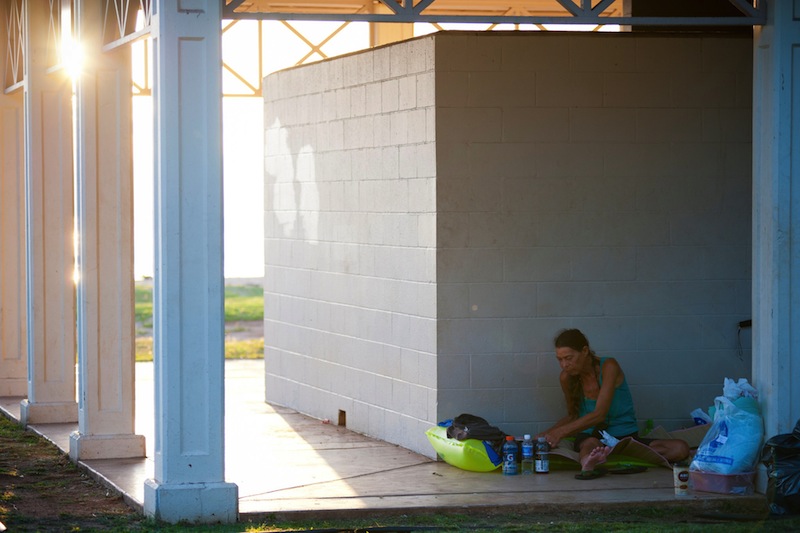
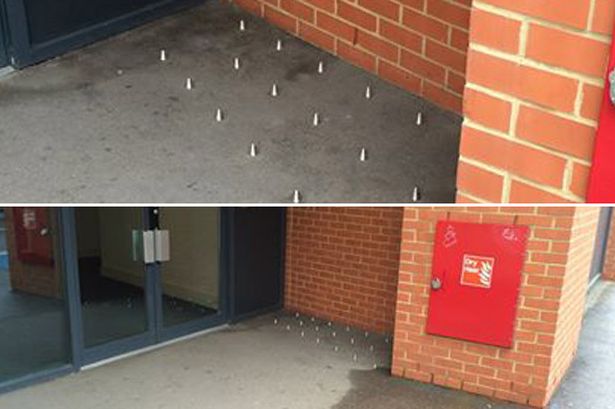
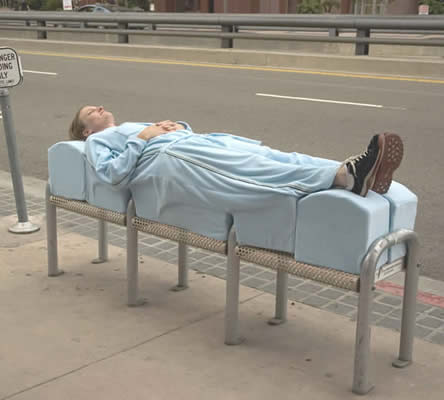
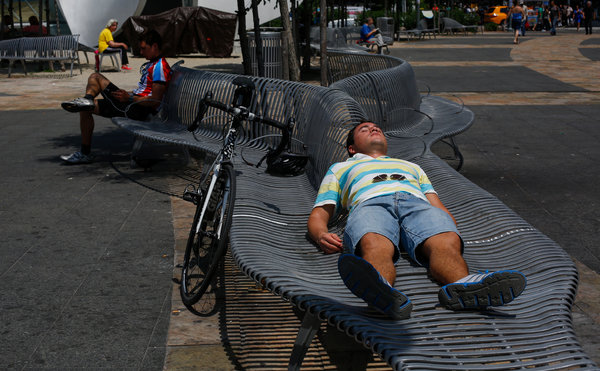
Leave a Reply